From DRUM! Magazine’s October 2017 Issue | By John Lamb
Let’s start with a couple tough statistics. Being a professional musician quadruples your likelihood of suffering noise-induced hearing loss and increases the risk for tinnitus by more than half. And drummers experience more hearing loss than any other musician.
A 2006 study by the Percussive Arts Society found that 57.6 percent of professional drummers and 44.2 percent of amateur players have tinnitus — ringing in the ears — at a rate three to four times higher than in non-musicians. Tinnitus usually follows hearing loss, although the true amount of hearing loss is even higher, since studies have shown that a person’s hearing actually improves after learning to play a musical instrument.
Hearing loss is a big problem. So here’s what you need to know about sound and the mechanics of the ear to understand how hearing loss occurs, as well as some tips on how to avoid it.
How The Ear Works
The ear is essentially a specialized form of touch. It feels the air outside and responds to a special kind of change in air pressure, otherwise known as sound waves. In fact, most of the ear works like a drum. In this metaphor, the thing actually making the sound (a car alarm, for example) is the batter head. The resonant head is the eardrum, and the ear canal resonates and amplifies the sound like a drum shell.
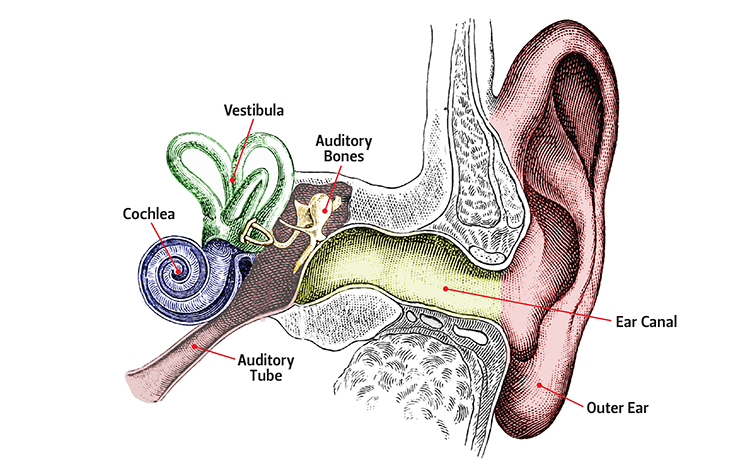 FIGURE 1 – A cutaway of a human ear shows the complex series of canals, bones, and organs that translate air pressure into sound.
FIGURE 1 – A cutaway of a human ear shows the complex series of canals, bones, and organs that translate air pressure into sound.
Take a look at Fig. 1. The eardrum moves three tiny auditory bones, which work like a preamp, further amplifying the sound and transmitting it into the cochlea. The cochlea is a coiled tube filled with fluid and a strip of sensory cells running in a line from end to end. This strip, called the Organ Of Corti (Fig. 2), houses the sensory cells (a.k.a. the ear hair cells) and their support cells. The auditory nerve connects the Organ Of Corti directly to the brain.
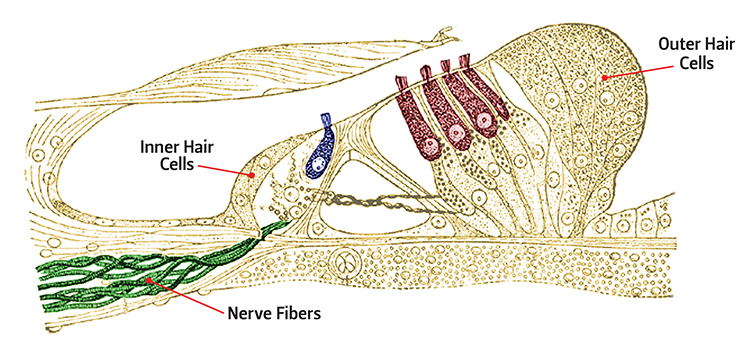 FIGURE 2 – The ear’s sensory cells are located in the Organ Of Corti.
FIGURE 2 – The ear’s sensory cells are located in the Organ Of Corti.
As sound waves travel through the cochlea, they knock over little hairs on the ear hair cells, which flips a switch and sends a signal to the auditory cortex in the brain. It was recently discovered that the hairs also amplify the sound by focusing the waves, similar to the way lasers focus light.
This strip of sensory cells works a lot like a graphic equalizer (Fig. 3). Each section of the cochlea is finely tuned to respond to only a very narrow band of frequencies while ignoring the others. The thick end responds to lowest pitches while the thin side responds to higher pitches.
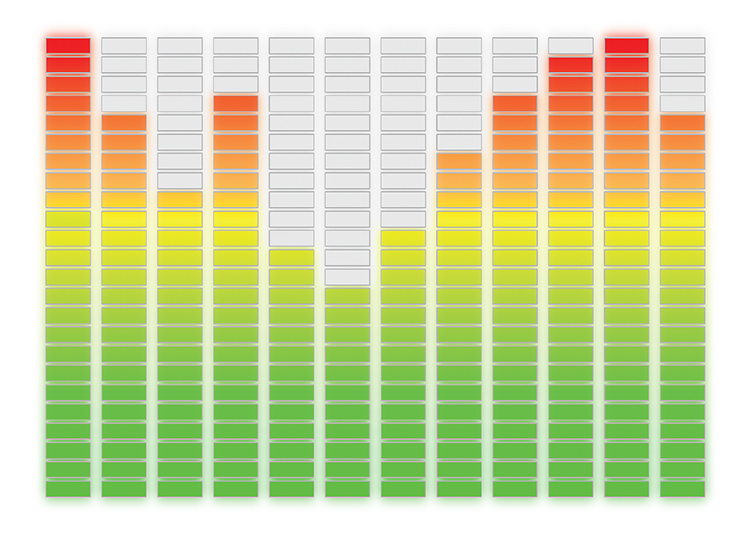 FIGURE 3 – Sensory cells in the Organ Of Corti line up like a graphic equalizer. The farther the hair cells are from the eardrum, the higher the pitch they respond to.
FIGURE 3 – Sensory cells in the Organ Of Corti line up like a graphic equalizer. The farther the hair cells are from the eardrum, the higher the pitch they respond to.
The signals are then sliced apart, analyzed, and put back together. They’re finally combined with vision and other sensory information into the final picture of what we perceive as sound. Problems with the signal coming from the cochlea or in the auditory cortex may cause tinnitus.
Pitch is measured in hertz (Hz), or the number of times per second something happens. For instance, if you spin around in circles fast enough to get dizzy, you’re probably spinning at 2–4Hz. Because sound waves are waves of compressed air, the speed at which the air compresses and decompresses is the pitch. Humans hear a pitch in any sound that vibrates between 20Hz and 20,000Hz. Faster sound waves are smaller. The lowest note on a piano (32Hz) makes a 35-foot wave while a 5,000Hz wave is less than 3″ long.
The ear is tuned to hear the human voice, so pitches between 500Hz and 2,000Hz sound louder to our ears than they really are. Bass notes, for example, are far outside that range, and need to move a lot more air to be heard.
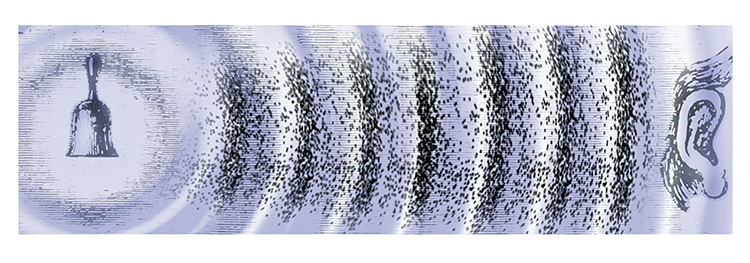 FIGURE 4 – Sound waves are pressure waves. The object creating the sound vibrates, pushing the air away from it with each vibration, and the waveform measures SPL. Higher spikes equal higher pressure.
FIGURE 4 – Sound waves are pressure waves. The object creating the sound vibrates, pushing the air away from it with each vibration, and the waveform measures SPL. Higher spikes equal higher pressure.
Volume is determined by the amount each wave compresses (Fig. 4). Big sound waves move a lot of air, which creates bigger changes in air pressure. Higher pressure creates higher volume (a.k.a. SPL or Sound Pressure Level). If you ever hear a front-of-house engineer talk about speakers that “move a lot of air,” they’re really just saying that the speakers are loud.
SPL is measured in decibels (dB). The perceived volume of a sound doubles for every 10dB, but the actual energy of the wave increases by a factor of ten for the same change. A dishwasher in the next room is half the volume of a normal conversation, but the energy of the sound wave is only one tenth. A nightclub or orchestra pit is 32 times as loud, and the waves are 100,000 times larger or more (Fig. 5).
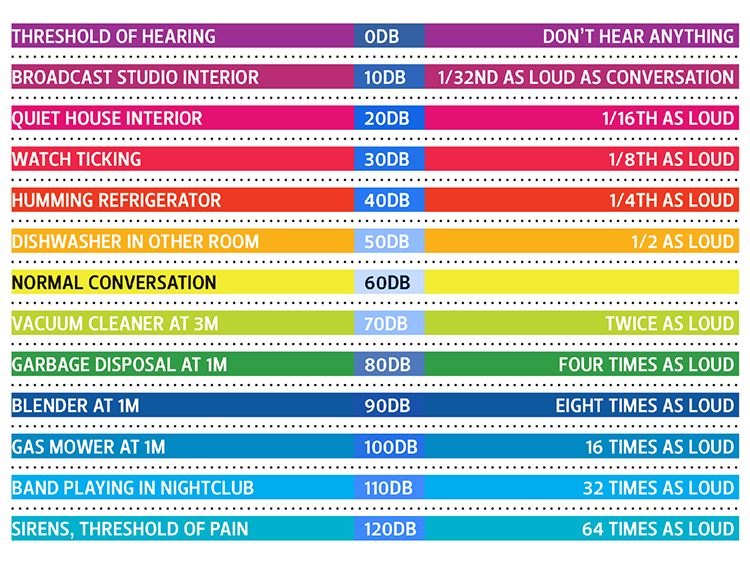 FIGURE 5 – The Decibel Scale
FIGURE 5 – The Decibel Scale
Noise Induced Hearing Loss
Volume is the biggest danger to hearing that drummers face. Drummers have more hearing damage than any other musician because our instrument is the loudest of all acoustic instruments, and unlike amplified instruments, it isn’t easy to just turn it down. Luckily, there’s a lot you can do to prevent noise-induced hearing loss.
Rate Of Repair
Your ears can heal themselves, but only up to a point. Human ears have a regeneration rate determined by genetics, diet, overall health, and stress level. As long as the damage stays below that rate, your ears will completely repair themselves. There has also been research on such medicines as glutothione, which can supplement this regeneration rate.
However, damage becomes permanent if ears don’t have the time or resources to repair themselves. While a single loud event may cause immediate damage, most hearing damage accumulates from smaller events.
This kind of damage is more like the rapid aging of the ear. When you hear sounds that are too loud for too long, the repair processes can’t keep up with the rate of damage. This kind of damage is calculated as an average volume over time. While it varies from person to person, hearing loss starts with long or repeated exposures to sounds at or above 85dB. Anything louder than that and you will need silent time to give your ears time to heal.
Energy Levels
Because louder sounds have more energy, they’re more likely to damage the ear. This much is obvious, but what isn’t so obvious is that the energy in a sound increases a lot faster than it seems to. As the dB level of a sound rises by ten, we think the volume doubles, but the actual power in the sound increases ten times. If the volume increases by 20dB, we think the volume quadrupled, but the actual energy increases by 100.
Warning Signs
The slow accumulation of damage can go unnoticed until it becomes significant. The first sign is usually difficulty distinguishing between voices in a group conversation or on the phone. Once it sneaks up on you, there isn’t much you can do about it. The good news is that there are a number of ways to prevent it. The first thing is to know the warning signs:
- Your ears hurt from the noise.
- Your ears feel “full” or “stuffed.”
- You have to raise your voice to speak to someone standing next to you.
- Your ears buzz or ring, even temporarily.
- You don’t hear as well anymore.
- Your ears get tired, and you don’t want to listen to any more sounds.
If you find any of these to be true, it will be worth your time to do something about it, starting with giving your ears some extra silent time. Your ears will thank you.
A story from my dad: “I remember hearing Commander Cody And His Lost Planet Airmen back in the late 1960s at the Armadillo World Headquarters in Austin. I was there to drink beer and observe, as a fellow musician, how they did the sound check. I clearly remember them telling the sound tech to put 90dB in the mains and 120dB in the monitors — an invitation to catastrophic old-age hearing loss.”
Ototoxicity
More than 1,000 drugs and chemicals are known to be “ototoxic,” which means they can damage the sensory structures in the ear. This list includes, but isn’t limited to, every single over-the-counter pain reliever available, including ibuprofen, naproxen, acetaminophen, and aspirin. Other widely known drugs with ototoxic side effects are nicotine, streptomycin, Valium, Paxil, Prozac, Xanax, and many more. Even antibiotics like neomycin and streptomycin, and diuretics like acetazolamide are among these drugs, and are in fact considered to be some of the most ototoxic. Several large studies on this subject are ongoing, so you can find out more information online and from your doctor.
These drugs may damage the ear directly, but the real danger to drummers comes when the drugs disrupt the ear’s regeneration. This is big news for anyone who cares about his or her hearing and regularly experiences loud sounds. Mounting evidence shows that ototoxic damage not only combines with noise-induced damage, but also actually multiplies it.
For example, multiple studies show that opiate addicts who work around loud sound levels experience permanent hearing loss 100 percent of the time. The incidence rate drops to 47 percent for hobbyists who only occasionally experience loud sounds. Other studies looked at workers who were exposed to both noise and toluene, an ototoxic chemical used widely in paint thinners, paints, and feedstock. Those who were exposed to noise alone had four times as much hearing loss as workers who weren’t exposed to either. Those exposed to toluene had five times as much hearing loss, but those exposed to both at the same time had 11 times as much hearing loss. Another similar study in Brazil placed this increased damage at over 27 times.
Ototoxic drugs can synergize with noise, and can synergize with each other, further amplifying the damage to the ear. Because there are so many ototoxic drugs, it takes extra care to avoid combining them. For example, both the nicotine in cigarettes and carbon monoxide can damage the ear by reducing its ability to recover from auditory trauma. The damage is amplified if nicotine and/or carbon monoxide (even second-hand smoke from bars) are combined with other ototoxic drugs or loud sounds.
Early warning signs of ototoxicity include dizziness; onset, change in type, or worsening of tinnitus; pressure in your ears; worsening or fluctuating hearing; and vertigo.
How Dangerous Is It?
I managed to get all the way through college with a focus on musicians’ health without ever hearing about ototoxicity. What I read seemed to be valuable information every musician should know, but it wasn’t included in any guide or class for musicians. For that reason, I was
skeptical and dove into the research. What I found made me feel that knowledge of ototoxicity was even more important for musicians than the general public.
Nobody really knows exactly how much drugs contribute to hearing damage, but it’s probably a lot more than research shows. There are dozens of ways drugs could harm the ear, yet most researchers aren’t looking at the type of subtle and slow hearing damage that builds up over time. As a result, gradual effects of ototoxicity don’t show up in clinical trials, on warning labels, or in doctors’ textbooks.
Whenever a patient notices a loss of hearing, ototoxic damage is often confused for noise-induced hearing loss or the consequences of old age. According to former FDA commissioner David Kessler, even when a doctor determines that ototoxic damage is the culprit, only about one percent of serious side effects are reported. Other research suggests this number is much too generous, putting it closer to zero.
Complicating matters further for researchers is that much of the damage is temporary. If most of us experience any symptoms at all, they will reverse when the drugs fade from our system. This might be great news for you. If you experience hearing loss and regularly take aspirin or another ototoxic medication, the two might be related. Unfortunately, sometimes a portion of the damage is permanent, but the real danger to us is the synergy between the medicine and damage from noise.
Further clouding the issue is a lack of clear research standards on ototoxicity. Some researchers hold that there must be a loss of at least 10dB in both ears before a drug can be considered ototoxic. A 10dB reduction means your sensitivity is reduced to an eighth of what it had previously been. Others put that limit at 15 or 20dB. This ought to scare you. By these standards, only a massive loss in hearing ability is counted as a side effect. Small damage that slowly builds up sails totally under the radar and isn’t even considered.
The chemotherapy medication cisplatin is an example of how much standards vary. Some researchers find almost no ototoxic effect, while others have found permanent hearing damage nearly all the time. The extreme difference between their conclusions is based on how the researchers define terms.
In the end, the only way to know how you are affected is to find out for yourself.
18 Things You Can Do About It
1. Talk To Your Doctor
Don’t simply stop taking medicine because you hear it’s ototoxic. Speak to your doctor first about your situation to find if you might have a better course of action. Be sure to tell your doctor about any existing hearing loss and make sure the doctor knows you’re a drummer. If your doctor is unaware of or unconcerned about ototoxicity, you might consider switching doctors.
2. Skip A Show
If you need to be on an antibiotic, maybe it’s better to skip your show or rehearsal to avoid doing any damage to your ears. However, if the show simply must go on, use the most powerful earplugs available.
3. Follow Dosages Exactly
Don’t take more than the amount your doctor or the drug company prescribes.
4. Avoid Ototoxic Drug Combinations
They can combine their effects to do extra damage. This is particularly true for loop diuretics, cisplatin, and aminoglycoside antibiotics. It’s even true for nicotine and aspirin. If you always use the same pharmacy for your prescriptions, they can help you watch out for bad drug combinations.
5. Drink Plenty Of Water
Drinking water protects your ears and helps moderate the levels of ototoxic drugs in the ears.
6. Eat Well And Exercise
When your body is healthy, it runs better, and handles ototoxicity more effectively.
7. Get Checked
If you begin a treatment with an ototoxic drug, get your hearing checked with a serial high-frequency audiogram before you begin the treatment, and monitor your hearing regularly as you go along. This will let you detect hearing loss early and stop the treatment. A serial high-frequency audiogram is important because normal hearing tests won’t catch hearing loss soon enough.
8. Reduce Volume At The Source
This is the most effective way to reduce damage. Turn down the volume knob a notch or two. Personally, I love using Remo Silentstroke drumheads in my practice studio. They are a bit too quiet for my tastes, so I put a Falam Slam or Impact Patch on the heads to give it a little extra volume (Fig. 6). I also use Zildjian L80 Low Volume Cymbals (Fig. 7). This combination really shines because the mesh of the Remo Silentstroke drumheads and the holes in Zildjian’s L80 cymbals allow the surface to vibrate without pushing much air, reducing volume while maintaining an authentic feel.
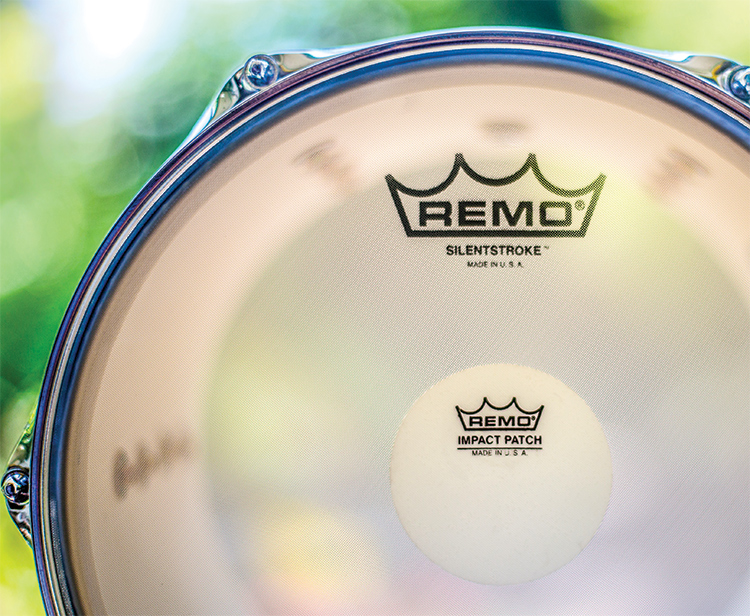 FIGURE 6 – A Remo Silentstroke drumhead with an applied Falam Slam patch.
FIGURE 6 – A Remo Silentstroke drumhead with an applied Falam Slam patch.
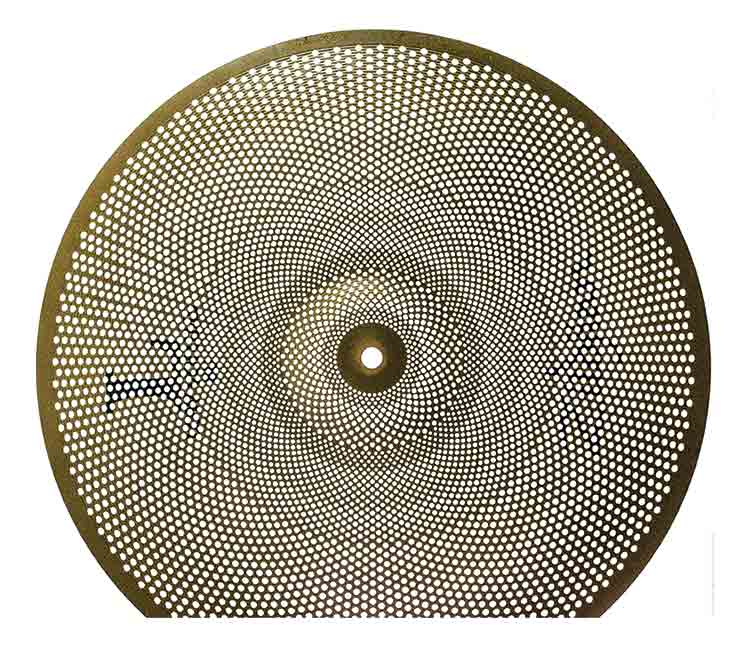
FIGURE 7 – A Zildjian L80 Low Volume cymbal.
9. Move Away
The power of sound decreases exponentially with distance. If you double the distance from a sound source, you reduce the volume by 6dB. It doesn’t sound like much, but the extra distance reduces the energy to a quarter of what it was. Keep this in mind when you are deciding where to set up your drums on stage, or fixing part of your kit on the fly.
10. Rest
Your ears get tired. After a loud concert, it’s safer to allow them a period of complete silence, or at least as close as you can get to it. I often sleep with earplugs in after a show to give my ears a little extra edge in recuperating, and my ears are much happier for it.
11. Earplugs
Earplugs are one of the simplest and most effective ways to prevent noise-induced hearing loss. The drawback is that they change the sound, but once your brain gets used to having them in, it does a good job of correcting the signal.
12. In-Ear Monitors
IEMs are a great way to reduce the amount of gear you have to carry and give you some direct control over your stage volume. Any kind of headphones can block some external sound, but make sure they aren’t part of the problem.
13. Take Antioxidants
Mounting research suggests that taking antioxidants before being exposed to loud sounds has some protective effect. Your ear uses them to repair damage, so making more antioxidants available while the ear is dealing with the damage aids in the process. The most important one seems to be glutathione. Research shows that taking some before or even immediately after exposure to loud sounds can stave off some permanent hearing loss.
14. Volume Limiter
While not as practical on stage, using a volume limiter on your MP3 or metronome can help to avoid damage.
15. Lighter Sticks
Force = Mass X Acceleration. Sticks that weigh half as much result in half the power and volume.
16. Eat Well
Damage from sound will happen. Give your ears a fighting chance by eating well so they can be at their best to repair as much of the damage as possible.
17. Don’t Smoke
The ear responds to loud sound by increasing blood flow to damaged areas. Nicotine prevents this. In fact, smokers are 70 percent more likely to develop noise induced hearing loss than nonsmokers.
18. Avoid Ototoxic Drugs
Every over-the-counter pain reliever and over 100 classes of drugs can make the ears sensitive to noise-induced hearing loss.
John Lamb is the author of Anatomy Of Drumming and proudly endorses Remo drumheads.
